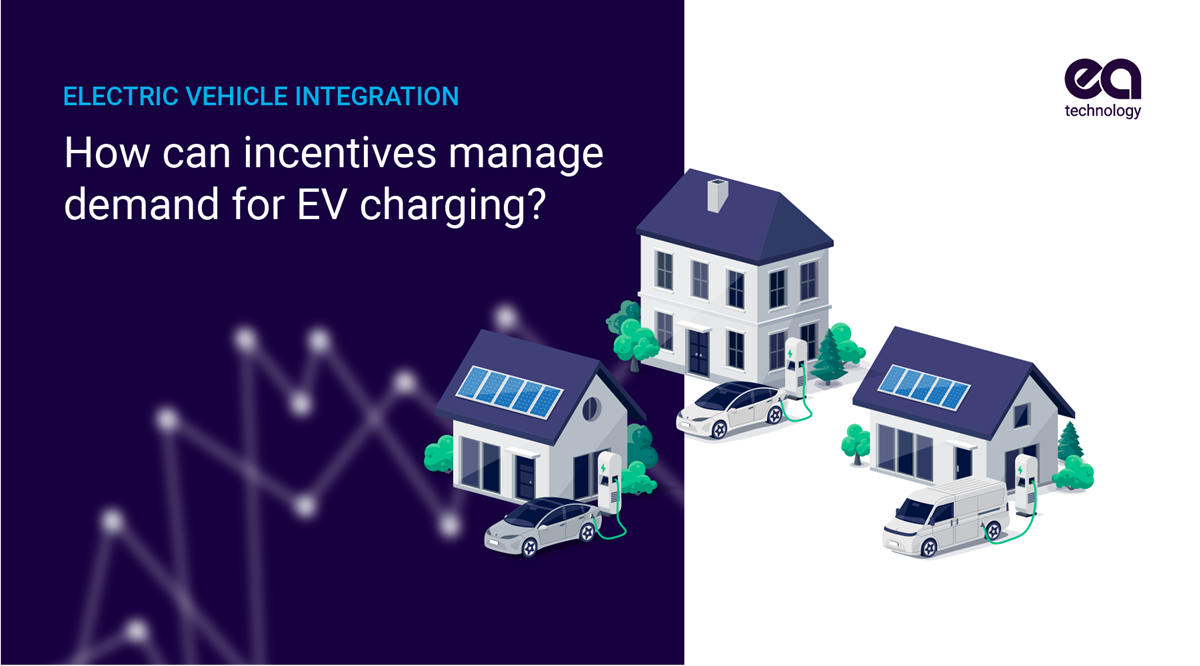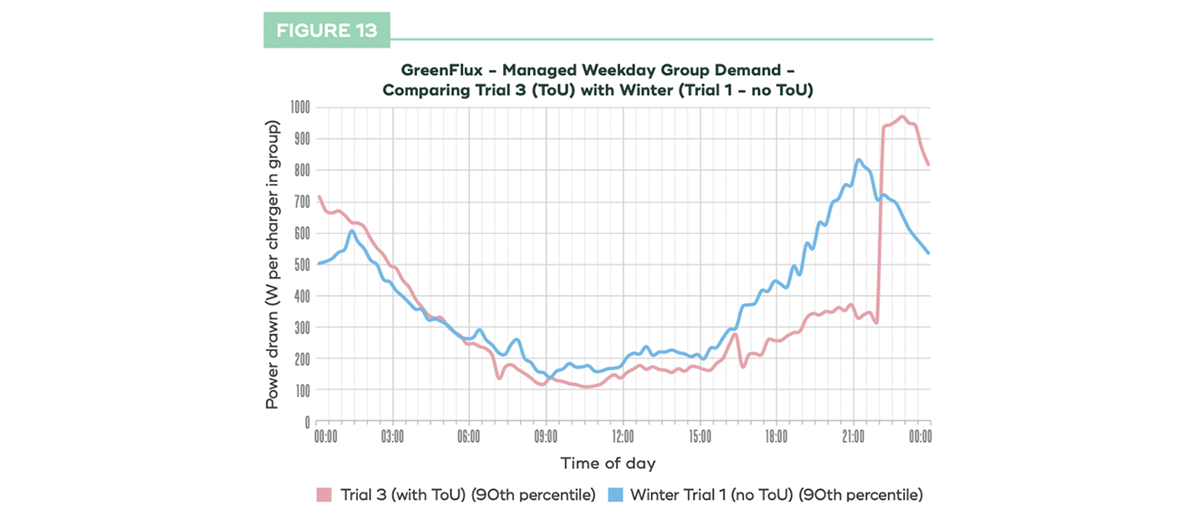EV Integration: How can incentives manage demand for EV charging?
-
03 January 2024
-
EA Technology

With the expected uptake of Electric Vehicles (EVs), service providers should understand how incentives can be used to manage peak demand periods and consider its effect on forecasting future capacity in the network.
As explored in Blog 2: How will DNSPs forecast EV loads?, collecting reliable historical data and consumer behaviours is essential for accurate forecasting of future electricity demand. EA Technology took part in the world’s largest Electric Vehicle (EV) home smart charging trial from 2016 to 2019 as the technical expert, analysis and trial manager.
The Electric Nation Project trials covered around 700 EV owners across the 18 months, aiming to provide DNSPs/network planners with data and feedback directly from firsthand experiences. Three types of trials were conducted, with Trial 3 introducing the usage of a tariff system and investigated the effect of incentives on managing peak demand periods.
How Peak Demands Fluctuate
Demand for electricity usage in households is significantly influenced by a number of factors that can create peak periods. Additional demand driven by the increase in EV charging can push the grid beyond its capacity, as seen in Figure 1 below.

The most notable peak demand forms during typical after-work hours from 5 to 9 PM, where the capacity risk occurs with current network constraints. In addition, factors like the day of the week, with different patterns on weekdays versus weekends, and seasonal variations affect when and how people charge their EVs.
Additionally, personal choices, such as whether to charge at home, work, or public stations, and the size of the vehicle's battery play a crucial role. To manage this, the implementation of smart chargers and incentives can encourage users to charge during off-peak times, helping to distribute the demand more evenly and prevent overwhelming the system during peak hours.
Trial 3 – How has incentives managed peak demand?

The observed pattern in the graph reveals a more delayed surge in electricity demand post-work hours, significantly deviating from the traditional peak. There was a distinct peak at 10 PM, coinciding with the time when the peak tariff kicked in. This shift suggests that the demand management strategies in place may have become less necessary as consumers responded to price signals.
Interestingly, the implementation of incentives like shopping vouchers appeared to be effective, with many people opting to shift their charging times. Feedback indicated a positive reception to both the penalty for peak period charging and the incentive for allowing charging to be managed during more efficient times.
Time of Use (ToU) pricing, in particular, seems to have successfully influenced user behaviour, flattening the traditional post-work demand spike and spreading the load more evenly across the evening hours.
The results indicate that there is considerable flexibility available in managing EV charging loads. Incentives, particularly when coupled with an app, proved to be highly effective in influencing user behaviour. Additionally, the implementation of smart charging was not only effective in managing loads on the network but also well-received by users, suggesting a positive public perception and willingness to adopt such technology for the greater good of the energy system.
Conclusion
Since the Electric Nation project, similar trials have been conducted regarding EV charging patterns and how they can be seamlessly integrated into the network. Energy providers have already begun to implement incentive programs to charge during off-peak hours. For example, Powershop offers a lower rate for vehicle charging between 12am - 4am.
EA Technology’s VisNet Connect can help DNSPs make informed decisions through better visualisation of network capacity and demand. Learn more about VisNet Connect here!
Want to learn more about the trials? Read the original project document here: Electric Nation

Get in touch
Thank you for your interest in EA Technology. You can request information or a free callback by clicking the link below. One of our experts will be in touch with you shortly.